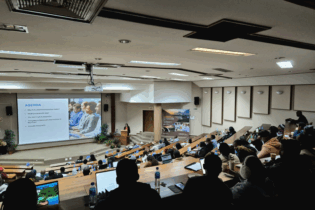Processes and challenges of analytical services relating to borehole and potable water
By Venetia Mitchell, laboratory liaison manager at Talbot & Talbot Laboratory testing of various chemical, microbiological and physiological parameters of borehole and potable water sources (drinking water) is imperative to water service providers and household users of a borehole water source. Results of analyses from water testing laboratories provide third-party verification of the quality of drinking water sources and the suitability of water sources for human consumption. When advising of water quality testing requirements of a drinking water source, a laboratory takes several factors into account as this assists in determining the parameters that should be tested as well as the frequency of sampling. These are:- location of the sampling site, e.g. at a treatment works or a distribution tap.
- number of people being serviced by the sample site, e.g. is the borehole source for single household use or community based
- when last the water source was tested and any previous results of analyses that are available
- the requirements of the South African National Standard on drinking water, SANS 241:2011
- whether a customer will use the water source for another purpose such as livestock watering or bottling
- whether the borehole source is newly drilled or an existing source.
Technical operations: methodologies applied
The technical methods adopted in a laboratory should be relevant to the service offered and the customer requirements.Water testing methods are standardised through internationally standardised methods and adopted locally in South Africa by the South African Bureau of Standards (SABS).Even though these methods are standardised, the laboratory needs to confirm that the methodology applied within their own environment is within the acceptable limits of the methods. This validation is carried out using various approaches including, but not limited to, inter-laboratory comparisons, calibration using reference standards or comparison of results achieved with other methods. A certain degree of uncertainty of measurement is also introduced in any laboratory and this should be determined for each of the methods applied.This uncertainty of measurement is calculated taking various parameters into consideration.These include parameters such as human factors, environmental conditions and sample handling and preservation. Technical operation: maintenance and calibration of equipment All equipment used in a laboratory should be maintained within a maintenance schedule and this plan would cover routine and non-routine maintenance, calibration and unique identification of the equipment. Records of all maintenance must be kept current and any maintenance should be traceable to the person performing the maintenance. Technical operation: staff training and competence All staff performing work within the laboratory must be deemed competent to undertake the tests for which they are responsible.Laboratory staff training of suitably qualified science graduates is usually supported by an extensive training and competence plan and only once deemed competent would an analyst be equipped to perform certain laboratory tests. Reporting When all results of analyses are available, a quality check of all the data is undertaken to ensure data integrity and technical accuracy.This check encompasses checking all quality control aspects of the tests, calculation and transcription checks and a cation-anion balance. A final report reflects the results accompanied by an interpretation of the data in accordance with the customer’s original request.Generally for samples collected from borehole and potable water sources, the objective of the testing is to understand the suitability of the source for human consumption. The report would reflect the results of analyses and a comparison to SANS 241:2011.Further to this, an explanation of the results would be provided to offer the customer an understanding of the results in terms of how they compare to the SANS 241 limits for drinking water.Where the results are outside these limits, the laboratory offers an explanation on the effects of these exceedances and also provides suggestions on mitigation measures. The water testing facility generally offers a holistic service in that there is consultation from first contact with the customer in providing advice and a quotation for the work, sampling in some instances, testing the samples, reporting the results of analyses and advising on water quality and mitigation measures.







